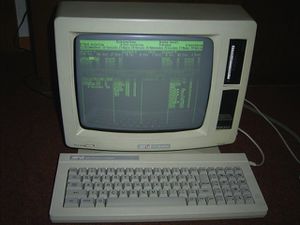Difference between revisions of "PCW"
(→Service Manual) |
|||
| Line 43: | Line 43: | ||
<gallery caption="Service Manual (German)"> | <gallery caption="Service Manual (German)"> | ||
| − | image: | + | image:Service manual PCW Page 01.jpg |
| − | + | image:Service manual PCW Page 02.jpg | |
| + | image:Service manual PCW Page 03.jpg | ||
| + | image:Service manual PCW Page 04.jpg | ||
| + | image:Service manual PCW Page 05.jpg | ||
| + | image:Service manual PCW Page 06.jpg | ||
| + | image:Service manual PCW Page 07.jpg | ||
| + | image:Service manual PCW Page 08.jpg | ||
| + | image:Service manual PCW Page 09.jpg | ||
| + | image:Service manual PCW Page 10.jpg | ||
| + | image:Service manual PCW Page 11.jpg | ||
| + | image:Service manual PCW Page 12.jpg | ||
| + | image:Service manual PCW Page 13.jpg | ||
| + | image:Service manual PCW Page 14.jpg | ||
| + | image:Service manual PCW Page 15.jpg | ||
| + | image:Service manual PCW Page 16.jpg | ||
| + | image:Service manual PCW Page 17.jpg | ||
| + | image:Service manual PCW Page 18.jpg | ||
</gallery> | </gallery> | ||
Revision as of 06:26, 12 March 2012
The PCW (Personal Computer for Writing) was another Amstrad computer. In Germany it's better known by its codename Joyce, which Schneider chose to keep for the final product.
The codename was the name of Alan M. Sugar's secretary.
The PCW was the Amstrad computer in production for the longest time(1985 - 1996). And the Amstrad computer with the most model revisions (Starting with the PCW8256 and ending with the PCW16). All models was based on the Z80 CPU.
The PCW was in some ways similar to the CPC range, but also different in many ways.
Similarities to the CPC
- Complete out-of-the-box system:
- central unit
- keyboard
- monitor
- disk drive
- Z80 CPU
- CP/M Plus operating system
Differences to the CPC
- No sophisticated sound chip (Beeper only)
- Joystick support through 3rd party extensions only (the keyboard controller includes support for two joysticks, as on the CPC, but no keyboard using this was ever built).
- No AMSDOS or other DOS in ROM, only a bootloader for CP/M
- No support for tape recorders
The PCW was designed as a (back then) professional computing system. This was underlined by the built-in green monitor (no support for colour monitors at all), the bundling with a printer and a word-processing software and bigger RAM (256k or 512k). Although the name might suggest it, the PCW was more than just a word-processing system. Unlike some other similar word-processing systems of its time, it came with a normal operating system, CP/M, and could run any software for this system, like spreadsheets, databases and so on. The PCW had its biggest success in the UK, where it is even used up to today in some branches, e.g. small hotels. In Germany, Schneider mainly marketed it as word-processing system, not outlining its usability for other purposes, so that professional users decided for IBM compatible PCs.
Video
TV-Commercial for the PCW (Spanish)
{{#ev:youtube|Vs4efMnLWVE|200}}
A PCW512 booting
{{#ev:youtube|N28JP5oYCyo|200}}
Service Manual
- Service Manual (German)


















